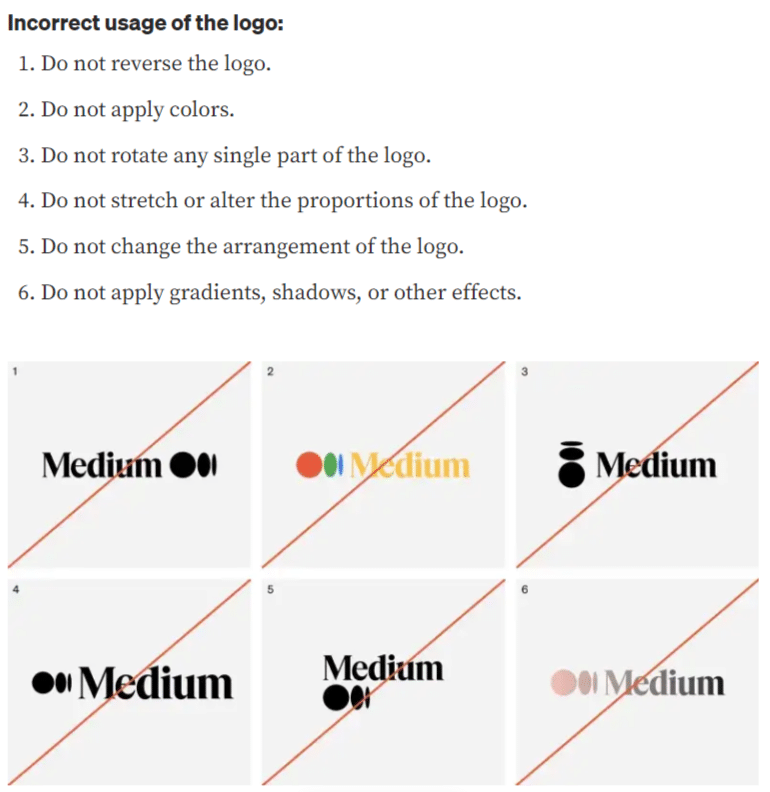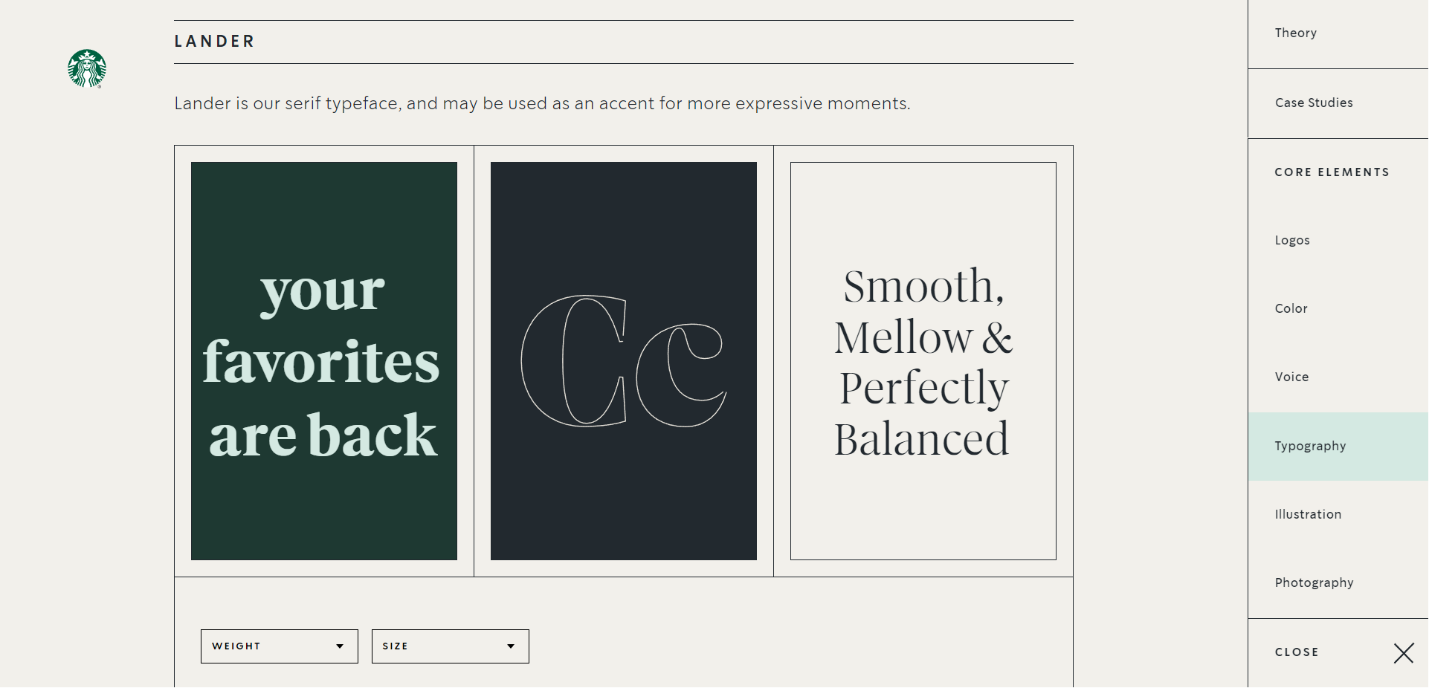If your brand is like most, you create various types of content across multiple channels.
You might even have more than one creator on your content marketing team.
How do you ensure the content you publish stays consistent in look, feel, and sound anywhere it appears online? How do you make sure it stays true to your brand voice and style no matter who creates it?
If you want consistency in your brand content and presence – and you should! – you need to create brand style guidelines. This guide will explain how.
What are brand style guidelines?
Brand style guidelines are a set of rules that govern how your content looks, feels, and sounds. Think standards: for your brand voice and tone, your logo and color palette, grammar rules, how to use and spell your brand name, how to use visuals in content, and more.
Usually, these guidelines are recorded in a shared document that your whole team can access. Each creator follows your guidelines to ensure your content stays consistent no matter who touches it.
Why you need brand style guidelines in your content strategy
A well-developed, thoughtful set of brand style guidelines is one of the key ways your brand identity is cemented in place.
When each piece of content you create adheres to these guidelines, it contributes to your overarching, consistent reputation across the web.
That’s no small feat, as brand consistency can increase revenue by 10-20%.
On the other hand, what happens if you don’t have brand style guidelines in place?
You risk creating a jarring or confusing experience for people who interact with your brand.
For example, let’s say you publish a blog with a serious, facts-driven tone, but your brand voice is actually casual and light-hearted. That’s a big disconnect that will give your audience a mixed message.
The same will happen if your content and platforms have various styles, tones, voices, and stylistic choices. Your brand identity will be like a shifting sea versus a strong, steady pillar people can trust.
At the end of the day, that’s what we’re most concerned with. Trust.
Consistency builds trust. Inconsistency kills it. And brand style guidelines help you cultivate consistency.
How to create brand style guidelines
Before you can create brand style guidelines, you must first have a firm grasp of your brand’s identity, including your mission, values, audience, and goals. These things form the foundation on which you’ll base your guidelines.
The point of a brand style guide is to cement your identity in place, so you must figure out each piece before you can document them. Don’t continue onward until you’ve accomplished this.
1. Brand identity: Mission, vision and ‘About us’
To start your brand style guidelines, record your business’s mission statement, vision for the brand, and the values underlying everything you do.
This section can also include your brand’s story or “About us” (how was it founded? Why was it started?).
Here’s a quick list with definitions:
- Mission statement: A short statement that details why/how your business exists. Who do you serve? How do you serve them? What’s the outcome of serving them?
- Vision statement: A short statement that sums up your brand’s vision for the future. What do you hope to achieve, ultimately? Instead, think about your larger impact on the world beyond revenue or customer goals.
- Values: What values are important to the brand? What values do you try to uphold while doing business?
- Story: How did the brand get started? Who started it, and why? How have you grown and changed since? What have you accomplished?

We include these elements in your guidelines because they can directly inform your brand’s personality, voice, and style. They can also guide how you approach creating content.
For example, say your brand was started out of your founder’s basement. Say the idea came from a group of friends hanging out and spitballing. When relevant, creators can take this story and weave it into your content. It might also inform your brand voice – i.e., casual, friendly, down-to-earth. This story is an important part of the brand personality, so it has a place inside the brand style guidelines.
Bottom line: Paint an overarching picture of your brand, so anyone who reads and follows your guidelines understands the heart of the business and what you stand for.
2. Audience
Next, include an overview of your audience. This part must be based on audience research, so if you haven’t done that yet, now’s the time.
If you’ve already created some business personas based on segments of your audience, add them here. For example, Mozilla Firefox’s brand style guidelines include written descriptions of their two personas: adventurous amplifiers and caring confidentials.

This piece of the puzzle is important for any content creators who will work with your brand. You can’t write or create targeted content without first understanding the target audience.
3. Visual elements: Logo, color palette and typography
Your brand style guidelines can also include rules for using visuals, like how your logo appears in content and your brand color palette and preferred fonts.
This information is super-important when you work with graphic designers or web developers. Standard visual rules will help your content look cohesive across channels, whether you're posting on your blog or social media, creating ads, building presentations, sharing videos on YouTube, etc.
For example, Medium has strict guidelines on how its logo can and cannot be used.

And Starbucks has guidelines showing their preferred fonts and how to use them.

4. Brand voice, tone, and style
Next, you'll need to include rules guiding how creators present your brand to the world through content. Stipulating brand voice, tone, and style is one of the main ways to keep your messaging consistent across channels.
Brand voice
Your brand voice is essentially your brand personality.
It determines how you come across to customers when you communicate with them, whether through writing or speaking.
For instance, maybe your brand is spunky and funny, sophisticated and mysterious, or intellectual and nerdy.
Even further, your guidelines should explain how your unique brand voice will show up in content.
For example, a brand with a spirited, fun voice might insert jokes or puns in the content. They might use GIFs and emojis.
Their sentences might trend on the short side, and their explanations will be clear and down-to-earth.
Brand tone
Your brand tone determines how your voice is delivered.
For example, if you come up with a great promotion for customers, you might tell them about it excitedly.
Or, if you have to deliver bad news, your tone might be apologetic or subdued.
Generally, your brand voice doesn't change because it's associated with your brand personality, which stays pretty consistent. But your tone can change because different situations call for adopting different tones. You can stipulate which tones to use for different circumstances in your brand style guidelines.
Brand writing style
Your brand writing style includes your preferred word usage, grammar, spelling, and formatting rules.
- Word usage: Which words should creators avoid altogether? (For instance, maybe they should avoid slang words like "gonna" or "shoulda.") How should they speak about or refer to your products/services? How should they use and refer to your brand name?
- Grammar and spelling rules: Does your brand use Oxford commas? How should writers approach abbreviated terms? Can they use contractions (i.e., don't versus do not)? Should numbers be written or spelled? Etc.
- Formatting rules: What are your rules for using numbered and bulleted lists? Do you have any rules for using headers? What about links?
Mailchimp has a fantastic example of comprehensive brand writing style guidelines to check out for inspiration. They go so deep, they're a completely separate guide.
For instance, Mailchimp has detailed rules about their voice and tone, how to use specific web elements (such as headings and subheadings) in their content, a detailed grammar guide, and much more.

A few tips to keep in mind about this part of your brand style guidelines:
Tip 1: If your writing guidelines are also this in-depth, consider creating a separate document/resource just for writers, as Mailchimp did. Otherwise, the rest of your team will have to wade through pages and pages of irrelevant information.
Tip 2: No time to create an encyclopedia of writing style rules? It may be helpful to choose a pre-existing, standardized style manual to base yours on, instead.
Large publishing entities have already developed robust style guides that you can use to underpin your own, like APA, MLA, or Chicago Style. Use these as the foundation and layer your unique brand voice guidelines on top. Each manual has subtle differences, so vet them carefully to choose the best match for your brand.
5. Other guidelines to consider
Lastly, consider these other helpful sections to add to your brand style guidelines.
Rules for using visuals in content
Consider adding rules for how you want creators to source images for blogs and other content. Can they use stock photos? Should all images be custom graphics? Are screenshots allowed? Is there a specific look/feel you want all visuals to have?
Rules for sourcing and citing statistics, studies, research, and other data
A great task to keep consistent across content like blogs is how writers source and cite research like studies, expert quotes, data, or surveys.
For example, are any sources off-limits (like Wikipedia or low DA websites)? How should creators mention and link to sources in content?
Use cases
If you can, show the people using your guidelines use cases and examples of do's/don'ts when writing and creating brand assets and content.
Show correct and incorrect uses of your logo, good and bad examples of brand voice, good and bad visual usage, the right and wrong way to link to sources in content, etc.
In Mozilla Firefox's guidelines, there are specific examples of how to use the brand voice/tone, for instance, correctly.

Ready to create your own brand style guidelines?
Creating brand style guidelines comprises just one part of building a content strategy.
It might not be the most exciting part, but it's mega important to keeping your brand presence consistent across the web.
And consistency matters far more than you may think. Consistency is a major reason your audience will trust you because a consistent voice and presence build credibility.
A steady presence is always better than a wavering one. You can trust it to remain reliable and true, no matter the circumstances.
So, the question remains: Do you want your brand to be seen as reliable, trustworthy, and constant – or scattered, confused, and unreliable?
Whether you have a clear set of brand style guidelines in place can help determine which category you fall into.
The post How to create brand style guidelines and why you need them appeared first on Search Engine Land.
https://ift.tt/o2c6uI1
from Search Engine Land https://ift.tt/w1FcXDx
via IFTTT







No comments:
Post a Comment
Thanks and response you soon